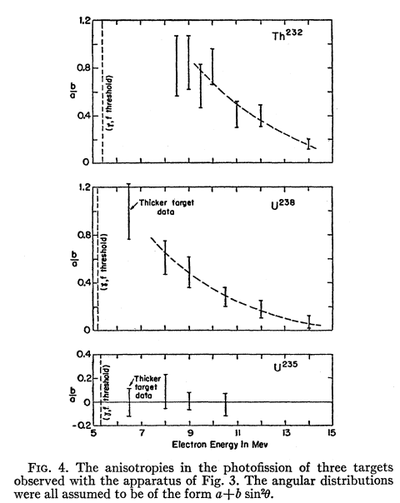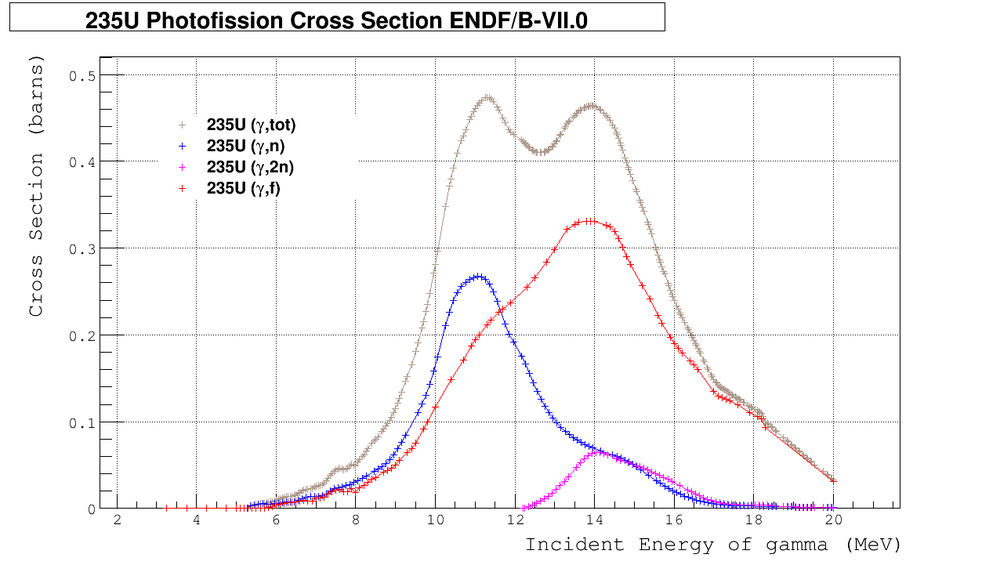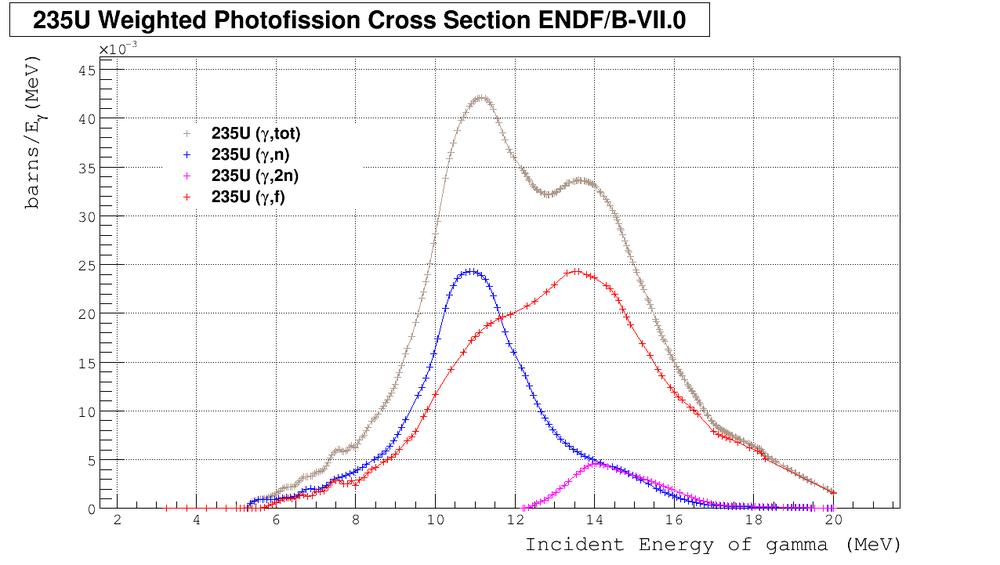Difference between revisions of "Anisotropic n's vs. isotropic ones"
Jump to navigation
Jump to search
| Line 54: | Line 54: | ||
==U Photo-fission Cross Section== | ==U Photo-fission Cross Section== | ||
| − | |||
| − | [[File: | + | [[File:U235.sigma.01.png | 1000px]] |
| + | |||
| + | [[File:U235.sigmaflux.01.png | 1000px]] | ||
Revision as of 20:16, 26 June 2011
Winhold and Halpern, Phys.Rev. 103 4, 990 (1956)
- The observation were consistent with the assumption that
- anisotropic fission is due solely to photons with-in about
- 3 MeV of the fission threshold".
- The photons in the giant resonance region were found
- to produce essentially isotropic fission
Anisotropic n's vs. isotropic ones
Say, we have only anisotropic neutrons
So the calculated asymmetry would be:
Now, say, we have extra 200 isotropic neutrons
So the calculated asymmetry would be:
That really reduce the measured asymmetry. If isotropic neutron's are much more than anisotropic ones we would not be able probably to see any asymmetry. Need to count isotropic and anisotropic neutrons.
Source of anisotropic neutrons:
- (,f) channel due to photons with-in about 3 MeV of the fission threshold
Source of isotropic neutrons:
- (,f) channel due to photons out of 3 MeV of the fission threshold
- (,n) channel? Need to check the angular distribution of neutrons.
- (,2n) channel? Need to check the angular distribution of neutrons.


